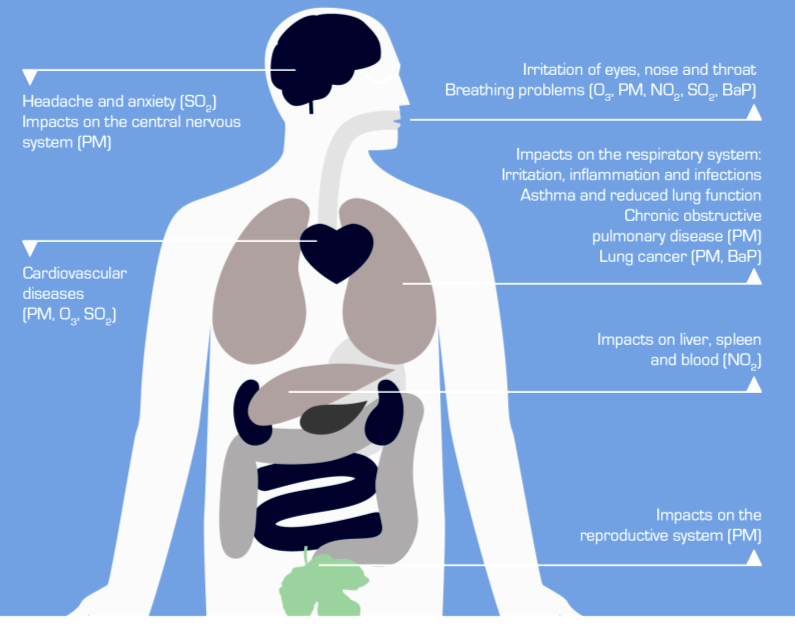Air quality index
Air quality index is a simplified way how to visualise and understand air quality information. The European Air Quality Index (AQI) converts air pollution concentration levels for the four major pollutants (NO2, PM10, PM2.5 or O3) into a 6-point scale, from "Good" through to "Extremely poor"; the concentration thresholds for each band and for each pollutant are given in the table below. For more information please see the European Environment Agency webpage on the European Air Quality Index.
Legend explained
The bands are based on the relative risks associated to short-term exposure to PM2.5, O3 and NO2, as defined by the World Health Organization in its report on the Health Risks of Air Pollution in Europe project (HRAPIE project report). For SO2, the bands reflect the limit values set under the EU Air Quality Directive.
The index is calculated hourly for all quality monitoring stations located in the northern part of Cyprus. By default, the air quality index depicts the situation 1 hour ago.
| Polutant | Index level | |||||
|---|---|---|---|---|---|---|
| (based on pollutant concentration in µg/m3) | ||||||
| Good | Fair | Moderate | Poor | Very poor | Extremely poor | |
| Pollutant Particles less than 2.5 pm (PM2.5) | 0-10 | 10-20 | 20-25 | 25-50 | 50-75 | 75-800 |
| Particles less than 10 pm (PM10) | 0-20 | 20-40 | 40-50 | 50-100 | 100-150 | 150-1200 |
| Nitrogen dioxide (NO2) | 0-40 | 40-90 | 90-120 | 120-230 | 230-340 | 340-1000 |
| Ozone (O3) | 0-50 | 50-100 | 100-130 | 130-240 | 240-380 | 380-800 |
| Sulphur dioxide (SO2) | 0-100 | 100-200 | 200-350 | 350-500 | 500-750 | 750-1250 |
Heath messages
The index bands are complemented by health related messages that provide recommendations for both the general population and sensitive populations. The latter includes both adults and children with respiratory problems and adults with heart conditions.
| AQ index | General population | Sensitive populations |
|---|---|---|
| Good | The air quality is good. Enjoy your usual outdoor activities. | The air quality is good. Enjoy your usual outdoor activities. |
| Fair | Enjoy your usual outdoor activities. | Enjoy your usual outdoor activities. |
| Moderate | Enjoy your usual outdoor activities. | Consider reducing intense outdoor activities, if you activities experience symptoms. |
| Poor | Consider reducing intense activities outdoors, if you experience symptoms such as sore eyes, a cough or sore throat. | Consider reducing physical activities, particularly outdoors, especially if you experience symptoms. |
| Very poor | Consider reducing intense activities outdoors, if you experience symptoms such as sore eyes, a cough or sore throat. | Reduce physical activities, particularly outdoors, especially if you experience symptoms. |
| Extremely poor | Reduce physical activities outdoors. | Avoid physical activities outdoors. |
